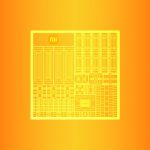The first consumer-grade PCIe Gen 5 platform was announced back in 2021 with Intel’s Alder Lake CPUs and although the chips had Gen 5 lanes, they were only limited to discrete GPUs. The Gen 5 SSD options would not appear until the end of 2022 and we have to thank AMD for its AM5 push that has truly kick-started the Gen 5 SSD market.
Currently, both Intel’s 700-series and AMD’s AM5 platform feature support for PCIe Gen 5 SSDs but Intel’s support is limited in the way that only a few motherboards that split the CPU Gen 5 lanes between the dGFX and M.2 slots have access to them.
AMD has more options but just like Intel’s premium offerings that support Gen 5 SSDs, AMD’s AM5 premium offerings also get Gen 5 SSD support which means there are still ways to go before we get to mass consumer variants. With that said, 2023 has finally kicked off retail availability for the first Gen 5 NVMe SSD solutions and Phison is leading the wave with its flagship E26 controller powering the most premium and fastest SSDs in their class.
For today’s review, we will be taking a look at two of the first PCIe Gen 5 NVMe SSDs powered by the Phison E26 controller. We have the TD510 2 TB SSD from Inland and the AORUS Gen 5 10000 2TB SSD from Gigabyte. Both of these storage devices are premium products retailing well above what Gen 4 SSD costs. SSD manufacturers will first be rolling out 10,000 MB/s products and move to faster 12 and 14 GB/s products once NAND Flash matures.
Inland TD510 2 TB PCIe Gen 5 NVMe SSD
The Inland TD510 PCIe Gen 5 NVMe SSD comes in 1 TB, 2 TB, & 4 TB flavors. The drives feature the Phison PS5026-E26 controller which hosts a PCIe Gen 5.0 x4 interface for up to 128 GT/s link speeds & comes with a dual CPU architecture that incorporates the Arm Cortex R5 CPU based on a 12nm process node. The SSD features support for 8 channels, supporting 3D TLC and QLC NAND Flash memory, LPDDR4/DDR4 DRAM controller (3200 Mb/s), & all the latest security features. The SSD comes in the standard M.2 2280 form factor which makes them compatible with virtually any modern PC.
The 2 TB and 4 TB drivers are rated at a maximum sequential read speed of 10,000 MB/s while the Sequential write speeds are rated at 9,500 MB/s. Similarly, the Random Read & Writes are rated at 1400/1500K IOPs, respectively. The 2 TB is rated at an endurance of 1400 TBW while the 4 TB has an endurance of 3000 TB. Meanwhile, the 1 TB variant is rated at 10,000 MB/s read and 8,500 MB/s Write speeds while offering 1300K/1500K IOPS and 700 TBW. The trio features hynix LPDDR4 DRAM and comes with a 6-year warranty.
Phison offers its 5th Generation LDPC ECC, RAID ECC, SmartECC (RAID ECC), and End-To-End Data Path Protection security features along with ASPM+APST for power management. Surprisingly, the manufacturer has yet to list its PCIe Gen 5 NVMe SSD on its official page but you can find more info at retailers such as . The heatsink and cooler on the Inland SSD are pre-installed and it is meant to be used this way since there are no copper or aluminum pads underneath the heatsink at all.
Inland TD510 2 TB PCIe Gen 5 NVMe SSD – Unboxing and Closer Look
The SSD comes in a small package. The package is colored white/blue and has a large picture of the SSD featured on it. The front also lists down some features such as capacities, maximum read speeds, and the tagline that it is the “Ultimate Gaming Solution”.
The back of the package lists some details along with the 6-year-limited warranty that the SSD comes with.
The internal packaging is simple with a foam casing holding the drive and the cables that come attached to it.
Out of the package, the drive comes in the standard M.2 2280 form factor and features a black PCB. You won’t be able to see the SSD itself since its hidden beneath the large active heatsink.
The large heatsink has an aluminum block that houses a small active fan solution. There are cut-outs on the front and sides of the heatsink to ventilate hot air out of it. Since this is an active-fan cooled SSD, it has a cable leading to a SATA and 4-pin Molex connector that requires to be plugged into work.
2 of 9
Taking a look at the internals, we can see that the Phison controller and the DRAM rest on the front. Having a cable attached to the SSD makes for a small bit of hassle when having to cable manage it but it does wonders when the drive works.
2 of 9
AORUS Gen 5 1000 2 TB PCIe NVMe SSD
The AORUS Gen 5 10000 NVMe SSD comes in 1 TB & 2 TB flavors. The drives feature the Phison PS5026-E26 controller which hosts a PCIe Gen 5.0 x4 interface for up to 128 GT/s link speeds & comes with a dual CPU architecture that incorporates the Arm Cortex R5 CPU based on a 12nm process node. The SSD features support for 8 channels, supporting 3D TLC and QLC NAND Flash memory, LPDDR4/DDR4 DRAM controller (3200 Mb/s), & all the latest security features. The SSD comes in the standard M.2 2280 form factor which makes them compatible with virtually any modern PC.
The 1 TB and 2 TB drivers are rated at a maximum sequential read speed of 10,000 & 9,500 MB/s while the Sequential write speeds are rated at 9,500 MB/s & 8,500 MB/s, respectively. Similarly, the Random Read & Writes are rated at 1400/1500K IOPs, respectively. Both drives utilize a 232-layer TLC NAND Flash. The 1 TB is rated at an endurance of 700 TBW while the 2 TB has an endurance of 1400 TB. The 1 TB features hynix 2 GB & the 2 TB features 4 GB LPDDR4 DRAM and comes with a 5-year warranty.
Phison offers its 5th Generation LDPC ECC, RAID ECC, SmartECC (RAID ECC), and End-To-End Data Path Protection security features along with ASPM+APST for power management. The SSD comes with both, a heatsink and a heatsink-less design so it’s up to users to decide which route they want to go.
AORUS Gen 5 1000 2 TB PCIe NVMe SSD – Unboxing and Closer Look
The SSD comes in a small package. The package is colored black and has the AORUS Eagle logo engraved on it.
The back of the package lists some details along with the 5-year limited warranty that it comes with.
2 of 9
Inside the package is the SSD itself, the heatsink, and the manual is seated underneath the foam container.
The AORUS Gen 5 10000 SSD comes with a copper sticker out of the box which should do the job well if you don’t want to use the massive heatsink that comes with it.
The M.2 Thermal Guard Xtreme is the standout feature of the AORUS Gen 5 10000 SSD with a large aluminum fin block that connects to a secondary heatsink through two massive nanocarbon-coated heat pipes. The heatsink comes with dual-sided high thermal conductivity pads and an aluminum base plate which even if not actively cooled, should provide lots of cooling potential.
2 of 9
The whole heatsink is so meaty that AORUS has provided a list of incompatible motherboards which you can view here. All of these motherboards are from AORUS so there would be a lot more from other manufacturers so do keep that in mind when buying this SSD.
2 of 9
Test Setup
Our test platform for this review consisted of an Intel Core i9-13900K processor which ran at stock clocks on the MSI Z790 ACE motherboard. The platform was coupled with 32 GB of DDR5 memory from G.Skill (Trident Z5/ 16 GB x 2) and the MSI MEG Ai1300P PSU. For graphics, I used the MSI GeForce RTX 4090 SUPRIM X. This rounds up as a high-end platform for tests with modern-day SSDs. The MSI Z790 ACE specifically houses a single Gen 5.0 x4 NVMe slot that sources its lanes from the Raptor Lake CPU.
2 of 9
Wccftech SSD Test Setup 2023
ProcessorIntel Core i9-13900K
Motherboard:MSI MEG Z790 ACE
Power Supply:MSI MEG Ai1300P (1300W)
Solid State Drive:Inland TD510 2 TB Gen 5
AORUS Gen 5 10000 2 TB
Solidigm P41 Plus 1 TB Gen 4
Solidigm P41 Plus 2 TB Gen 4
Inland Gaming Performance Plus 2 TB (Gen 4)
Seagate IronWolf 525 500 GB (Gen 4)
Samsung 980 Pro 1 TB (Gen 4)
MSI Spatium M450 1 TB (Gen 4)
MSI Spatium M480 2 TB (Gen 4)
MSI Spatium M470 1 TB (Gen 4)
TeamGroup CARDEA C440 1 TB (Gen 4)
TeamGroup CARDEA IOPS 1 TB (Gen 3)
TeamGroup CARDEA A440 1 TB (Gen 4)
TeamGroup T-Create Classic 2 TB (Gen 3)
Memory:G.Skill Trident Z5 DDR5-7400 (2 x 16 GB)
Case:Cooler Master C700M
Video Cards:MSI GeForce RTX 4090 SUPRIM X
Cooling Solutions:MSI MEG S360 AIO Liquid Cooler
OS:Windows 11 64-bit
Just for fun, we also used the ASRock-provided Blazing M.2 SSD heatsink which includes a large aluminum heatsink and an active fan to see how that does with the new Gen 5 drives:
2 of 9
Solidigm P41 Plus Gen 4 Gen 4 SSD Performance Benchmarks
First up, we have the official performance stats for these drives as listed by their manufacturers. You can compare these stats with the rest of the drives I tested in the following chart:
Official SSD Stats (IOPS)
Official SSD Stats (MB/s)
AS SSD Benchmark
AS SSD Benchmark download is a Windows 10 utility software program that tests the performance of solid-state drives. With its help, you can find out the speed of all installed SSDs and take care of any issues that the tests may reveal. The free app performs three separate tests to provide you with conclusive evidence of your driver’s general behavior while it copies, reads, and writes data. The app determines the access time of an SSD, along with its speed and performance capabilities
AS-SSD Benchmark
ATTO 3.05 Disk Benchmark
As the industry’s leading provider of high-performance storage & network connectivity products, ATTO has created a widely-accepted Disk Benchmark freeware software to help measure storage system performance. As one of the top tools utilized in the industry, Disk Benchmark identifies performance in hard drives, solid-state drives, RAID arrays as well as the host connection to attached storage. Top drive manufacturers, like Hitachi, build and test every drive using the ATTO Disk Benchmark.
The ATTO Disk Benchmark performance measurement tool is compatible with Microsoft Windows. Use ATTO Disk Benchmark to test any manufacturer’s RAID controllers, storage controllers, host bus adapters (HBAs), hard drives, and SSD drives, and notice that ATTO products will consistently provide the highest level of performance to your storage.
ATTO v3.05 128 KB Sequential QD4
Crystal Disk Mark 7.0.0 x64
CrystalDiskMark is a disk benchmark software. It measures sequential reads/writes speed, random 512KB, 4KB, 4KB (Queue Depth=32) reads/writes speed, selects test data (Random, 0Fill, 1Fill),
Crystal Disk Mark 7.0.0 x64 SEQ1M Q8T1
Crystal Disk Mark 7.0.0 x64 4KiB Q1T1
File Transfer Speeds (100 GB File Size)
To test the maximum average transfer speeds of the drives, I used a 100 GB file to test the limits.
File Transfer Rate (MB/s)
PCMark 10 Storage Benchmark
The PCMark 10 Storage benchmark is designed to test the performance of SSDs, HDDs, and hybrid drives with traces recorded from Adobe Creative Suite, Microsoft Office, and a selection of popular games. You can test the system drive or any other recognized storage device, including local external drives. Unlike synthetic storage tests, the PCMark 10 Storage benchmark highlights real-world performance differences between storage devices.
PCMark 10 System Disk Storage Bench
PCMark 10 System Disk Access Times
Forspoken DirectStorage Benchmark
Forspoken DirectStorage Benchmark (Load Time In Seconds)
Conclusion – Fast Drives With Early Adopter Tax
The first consumer PCIe Gen 5 SSDs were announced all the way back in 2021 and in 2023, they finally hit retail shelves. The new SSDs promise more performance, faster transfer rates, and also unique cooling designs which have become a necessity as performance and power keep going up.
The Inland and AORUS Gen 5 drives we tested today are some of the first and earliest consumer options available. These drives are rated at up to 10,000 MB/s and in terms of performance, they did really well in all benchmarks, offering the fastest read and write transfer rates with some of the lowest latency and access times we have seen on a drive yet. Each drive has its pros and cons but before that, we want you to see the temperatures below which have been a major point of concern for many consumers.
Temperatures
Even during peak load and without a heatsink, the AORUS 10000 Gen 5 SSD didn’t break past the 65C barrier and that’s in a closed-case environment with the GPU covering it and further restricting airflow. The Gen 5 SSDs we tested come with proper heatsink solutions that do offer lots of cooling but users might also get into some complications concerning motherboard compatibility as was the case with the AORUS Gen 5 10000 and its massive heatsink. The Inland drive has its own issues as the cable needs to be routed for the fan to operate but I believe that even without the fan working, the SSD can still run fairly well.
Even if you don’t want to spend the extra in acquiring the premium heatsink drives, you can get a standard one and since you’ll already be running a high-end motherboard that comes with a pre-installed M.2 heatsink, that would be more than enough to cool it. Again, the drives with heatsinks will cause compatibility issues with the GPU and motherboard depending on the slot they are being used in. But with all that said, temperatures won’t be a cause of concern (until faster Gen 5 SSDs are launched).
Now while these SSDs are amazing in terms of performance, we have to point out that actual real-world gains may not be as significant in applications like gaming. Microsoft’s DirectStorage API has already shown us that even Gen 3 or HDDs can deliver similar loading times in games as the fastest Gen 4 drives and while Gen 5 offers an uplift, it’s not as significant to be noticed by users. The other thing is the value.
The AORUS Gen 5 10000 SSD 2 TB SSD was listed for around $340-$350 US at Newegg (currently out of stock as of 3/28/2023). The Inland TD510 Gen 5 is currently discounted at $299.99 US (original price of $399.99 US as of 3/28/2023) for the 2 TB variant. These are much higher than the fastest Gen 4 drives available today which more or fewer shows that manufacturers are trying to get that early adopter tax out of consumers who want to enjoy these premium drives. That’s also why there’s limited stock available at the moment since the real mass consumer drives are still a bit late and not expected until the beginning of 2024. Till then, while we will get 10 GB/s and maybe a few 12 GB/s options, they would be priced with a large premium.
But overall, Phison E26 controller has proved that the future is with Gen 5, & if the first-gen drives are anything to go by, we can expect even better performance as the platform and drives mature in the coming future.
The post Phison E26 PCIe Gen 5 NVMe SSD Review Ft. Inland TD510 2 TB & AORUS Gen 5 10000 2 TB by Hassan Mujtaba appeared first on Wccftech.







